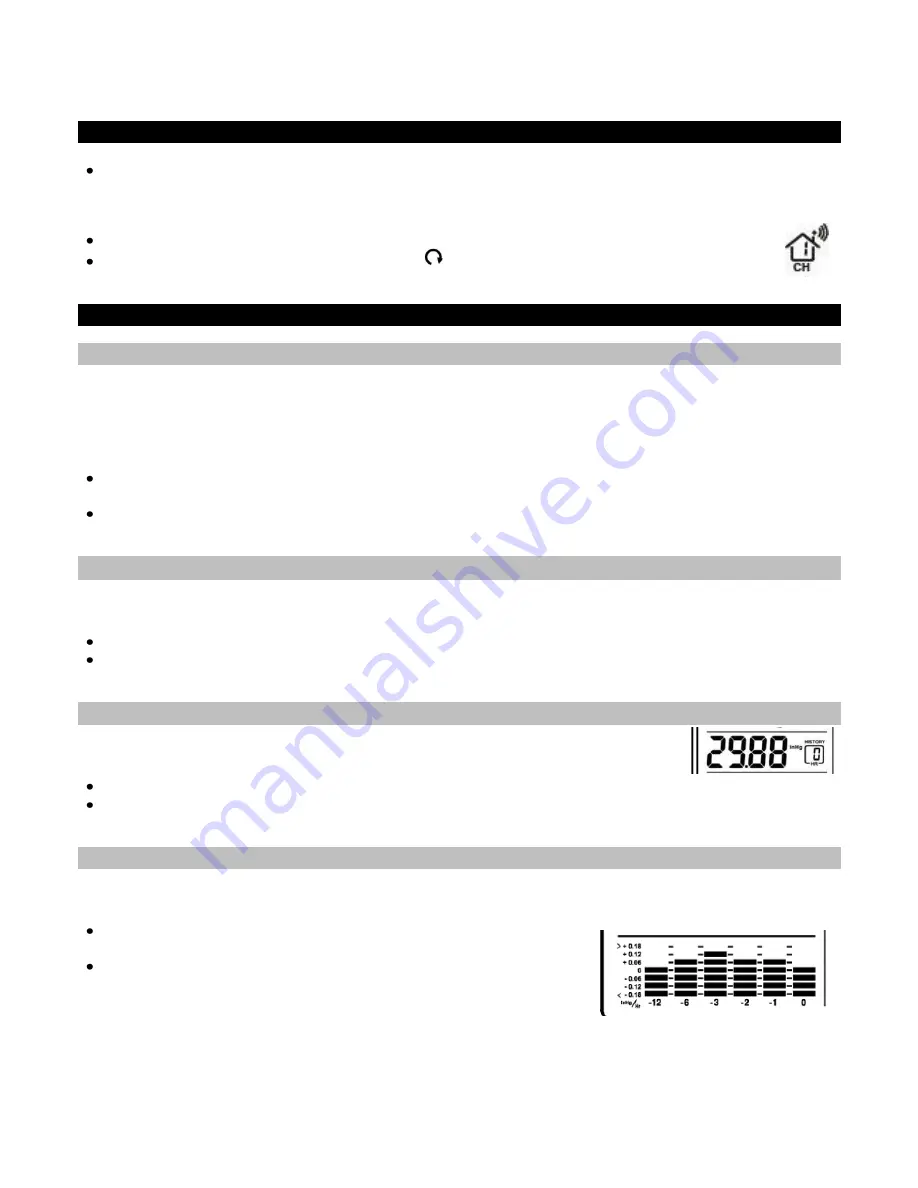
10
The temperature trend indicators are shown next to the indoor temperature and outdoor temperature readings.
Channel Selection and Auto-scroll
Channels:
The forecast station can receive up to 3 outdoor transmitters. Extra TX142TH sensors may be
found online or at your retailer to monitor remote temperature in up to 3 locations within a 200 ft. wireless
range of the forecast station. When more than one transmitter is used, set each transmitter to a different
channel number then hold the CH button for 5 second to search for the transmitters.
View Channels:
Press the CH button to select Ch1, Ch2, Ch3 or auto-channel scroll.
Auto scroll-channel
will show a circling arrow
below the channel number and will rotate
through each channel approximately every 5-8 seconds
Pressure Readings
Absolute Barometric Pressure Number
Barometric Pressure is read by the forecast station. The numeric pressure value adjusts automatically as the
forecast station reads changes in air pressure. Since this number is
absolute
pressure, it may not be the same
as a local reporting station that reads in
relative
pressure.
Note:
The number
cannot
be calibrated.
Absolute Pressure
is measured in a vacuum without the influences of terrain, weather, water, foliage and
elevation. The air pressure it would be consistent at every elevation and decrease as it went higher.
Relative Pressure
is a combination of air pressure and altitude. Relative air pressure will make readings in
local areas relative to each other to allow for proper forecasting.
Pressure Unit of Measurement (InHg or hPa)
Hold the HISTORY button for 5 seconds to switch from InHg (inches or mercury) or hPa (Hectopascal) for the
numeric pressure display and the pressure graph.
Inches of Mercury
is common for weather reports and aviation in the United States.
Hectopascal
is equivalent to millibar and commonly used to measure atmospheric pressure outside the
United States.
Pressure History
Press and release the HISTORY button to view the past 12-hours of numeric pressure
history.
In the small box to the right of the numeric pressure a number from 0 to -12 will appear.
0 is current pressure. -1 through -12 reflects the history in one-hour increments.
Note:
The history graph and forecast icons will not change when you view pressure history.
Pressure History Graph
The bar chart indicates the air pressure history trend over the last 12 hours in 5 steps, 0h, -1h, -2h, -3h, -6h & -
12h.
The columns represent the change in ”InHg” or “hPa” readings at
specific times.
The “0” in the middle of this scale is equal to the current pressure and
each bar represents how high or low in InHg or hPa the past pressure
was
compared
to the current pressure.
Read the graph from left to right. If the bars are rising, it means that the
weather is getting better due to the increase of air pressure. If the bars go down, it means the air pressure has
dropped and the weather is expected to get worse from the present time (
0h
).
Note:
The bar graph will scroll continually to prevent LCD burnout.
Summary of Contents for 308-1451
Page 18: ...18 Appendix A ...




































